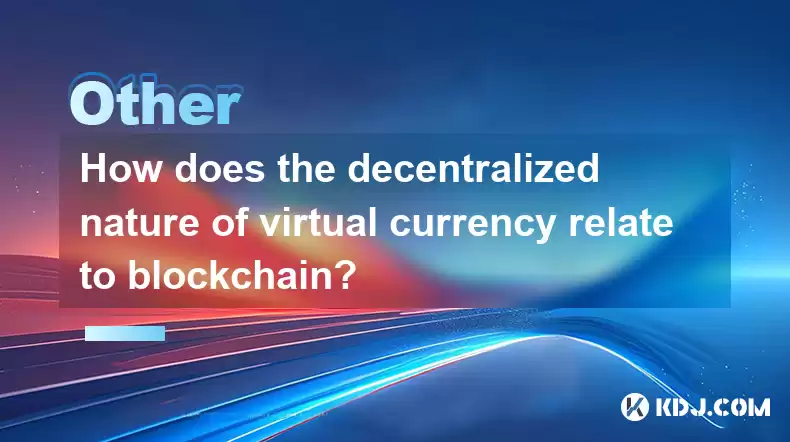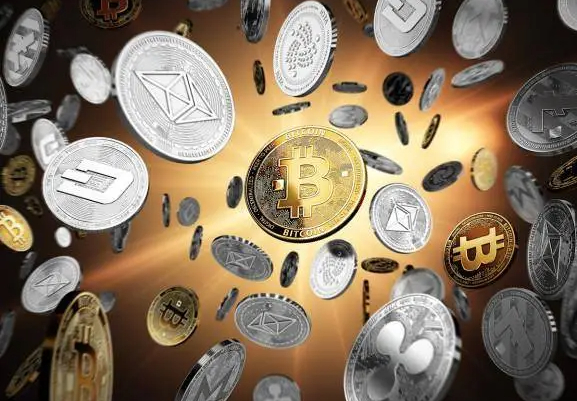-
 Bitcoin
Bitcoin $114400
0.68% -
 Ethereum
Ethereum $3550
2.48% -
 XRP
XRP $3.001
4.99% -
 Tether USDt
Tether USDt $0.9999
0.01% -
 BNB
BNB $757.6
1.46% -
 Solana
Solana $162.9
1.07% -
 USDC
USDC $0.9998
0.00% -
 TRON
TRON $0.3294
0.91% -
 Dogecoin
Dogecoin $0.2015
2.46% -
 Cardano
Cardano $0.7379
2.01% -
 Stellar
Stellar $0.4141
8.83% -
 Hyperliquid
Hyperliquid $37.83
-1.91% -
 Sui
Sui $3.454
0.76% -
 Chainlink
Chainlink $16.62
3.53% -
 Bitcoin Cash
Bitcoin Cash $554.6
2.84% -
 Hedera
Hedera $0.2486
3.91% -
 Ethena USDe
Ethena USDe $1.001
0.00% -
 Avalanche
Avalanche $21.95
3.34% -
 Toncoin
Toncoin $3.563
-2.85% -
 Litecoin
Litecoin $112.7
2.65% -
 UNUS SED LEO
UNUS SED LEO $8.977
0.13% -
 Shiba Inu
Shiba Inu $0.00001232
1.85% -
 Uniswap
Uniswap $9.319
2.93% -
 Polkadot
Polkadot $3.632
1.38% -
 Monero
Monero $307.2
2.36% -
 Dai
Dai $0.9997
-0.03% -
 Bitget Token
Bitget Token $4.340
0.91% -
 Pepe
Pepe $0.00001048
1.07% -
 Cronos
Cronos $0.1348
3.26% -
 Aave
Aave $261.5
1.93%
What is the relationship between the decentralized characteristics of virtual currencies and blockchain?
The decentralized characteristics of virtual currencies are supported by blockchain technology. Distributed networks and consensus mechanisms ensure that their transactions are transparent and secure without the intervention of central institutions, and promote digital financial innovation.
Mar 28, 2025 at 06:00 pm

In the wave of digital finance, virtual currency attracts everyone's attention with its unique charm, and its decentralized characteristics have become the key to distinguish it from traditional currencies. So what is the close connection between the decentralized characteristics of virtual currencies and blockchain? Don't worry, let's find out next.
Blockchain technology foundation
Blockchain is essentially a decentralized and distributed database technology. It consists of multiple nodes, and the data is verified and stored through a consensus mechanism, so as to realize the immutability of data and integrate computer technologies such as distributed data storage, point-to-point transmission, consensus mechanism, and encryption algorithms to build a new application model. In this system, data is not concentrated in one or several servers, but is stored scattered among many network nodes, each node has a complete copy of the ledger.

The decentralization of virtual currency
Issuance decentralization : The issuance of virtual currencies has abandoned the traditional model of relying on centralized institutions such as central banks. Taking Bitcoin as an example, it is generated through large-scale calculations based on a specific algorithm, with a total issuance of 21 million coins. A distributed database composed of many nodes in the entire P2P network confirms and records related transaction behaviors. It does not rely on specific currency institutions to issue it, ensuring that it is impossible to artificially manipulate the currency value by manufacturing large amounts of Bitcoin.
Decentralization of transactions : In the virtual currency trading scenario, buyers and sellers can use blockchain technology to realize point-to-point transactions without the intervention of third-party platforms. For example, with Bitcoin, its transaction concept is decentralized, making transactions more convenient and secure, and avoiding information leakage problems. In the long run, it reduces the cost of maintaining third-party platforms.
Storage and governance decentralization : Users’ virtual currency assets are stored in digital accounts that they control, rather than centralized accounts. In addition, the decision-making of blockchain projects is decided by community members participating in the voting. For example, decentralized autonomous organizations (DAOs), their rules and decisions are automatically executed by smart contracts, and member communities can participate in governance through voting.

Analysis of the relationship between the two
Disclaimer:info@kdj.com
The information provided is not trading advice. kdj.com does not assume any responsibility for any investments made based on the information provided in this article. Cryptocurrencies are highly volatile and it is highly recommended that you invest with caution after thorough research!
If you believe that the content used on this website infringes your copyright, please contact us immediately (info@kdj.com) and we will delete it promptly.
- Cryptocurrency, Altcoins, and Profit Potential: Navigating the Wild West
- 2025-08-04 14:50:11
- Blue Gold & Crypto: Investing Disruption in Precious Metals
- 2025-08-04 14:30:11
- Japan, Metaplanet, and Bitcoin Acquisition: A New Era of Corporate Treasury?
- 2025-08-04 14:30:11
- Coinbase's Buy Rating & Bitcoin's Bold Future: A Canaccord Genuity Perspective
- 2025-08-04 14:50:11
- Coinbase's Buy Rating Maintained by Rosenblatt Securities: A Deep Dive
- 2025-08-04 14:55:11
- Cryptos, Strategic Choices, High Returns: Navigating the Meme Coin Mania
- 2025-08-04 14:55:11
Related knowledge

What is the purpose of a nonce in mining?
Aug 04,2025 at 05:56pm
Understanding the Role of a Nonce in Cryptocurrency MiningIn the world of cryptocurrency mining, the term nonce stands for 'number used only once.' Th...

What is the difference between on-chain and off-chain transactions?
Aug 02,2025 at 04:22pm
Understanding On-Chain TransactionsOn-chain transactions refer to digital asset transfers that are recorded directly on a blockchain ledger. These tra...

How are blocks linked together?
Aug 04,2025 at 06:56am
Understanding the Structure of a BlockchainA blockchain is a decentralized digital ledger composed of a sequence of blocks, each containing a list of ...

What is a node's role in a blockchain network?
Aug 03,2025 at 03:16pm
Understanding the Function of a Node in a Blockchain NetworkA node is a fundamental component of any blockchain network, acting as a participant that ...

How are transactions verified on a blockchain?
Aug 04,2025 at 12:35am
Understanding the Role of Nodes in Transaction VerificationIn a blockchain network, nodes are fundamental components responsible for maintaining the i...

What is the double-spending problem and how does blockchain prevent it?
Aug 02,2025 at 01:07pm
Understanding the Double-Spending ProblemThe double-spending problem is a fundamental challenge in digital currency systems where the same digital tok...

What is the purpose of a nonce in mining?
Aug 04,2025 at 05:56pm
Understanding the Role of a Nonce in Cryptocurrency MiningIn the world of cryptocurrency mining, the term nonce stands for 'number used only once.' Th...

What is the difference between on-chain and off-chain transactions?
Aug 02,2025 at 04:22pm
Understanding On-Chain TransactionsOn-chain transactions refer to digital asset transfers that are recorded directly on a blockchain ledger. These tra...

How are blocks linked together?
Aug 04,2025 at 06:56am
Understanding the Structure of a BlockchainA blockchain is a decentralized digital ledger composed of a sequence of blocks, each containing a list of ...

What is a node's role in a blockchain network?
Aug 03,2025 at 03:16pm
Understanding the Function of a Node in a Blockchain NetworkA node is a fundamental component of any blockchain network, acting as a participant that ...

How are transactions verified on a blockchain?
Aug 04,2025 at 12:35am
Understanding the Role of Nodes in Transaction VerificationIn a blockchain network, nodes are fundamental components responsible for maintaining the i...

What is the double-spending problem and how does blockchain prevent it?
Aug 02,2025 at 01:07pm
Understanding the Double-Spending ProblemThe double-spending problem is a fundamental challenge in digital currency systems where the same digital tok...
See all articles

























































































